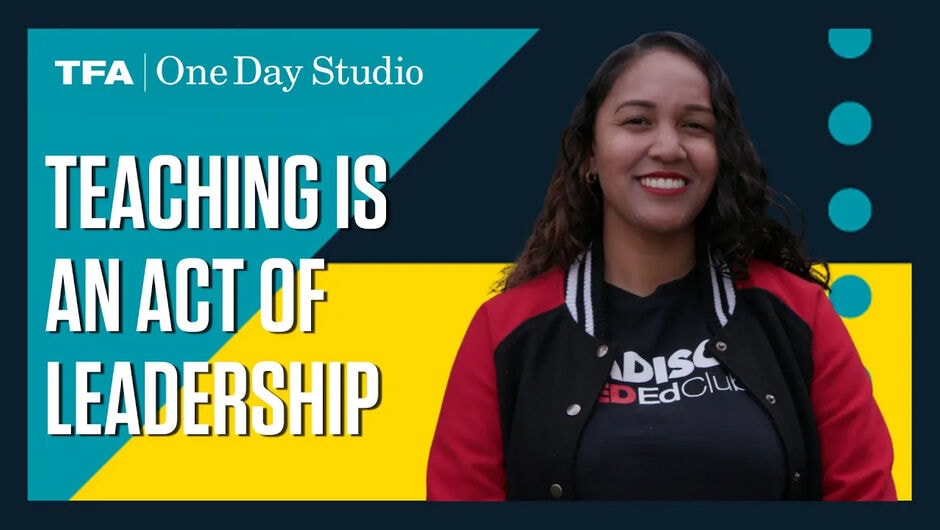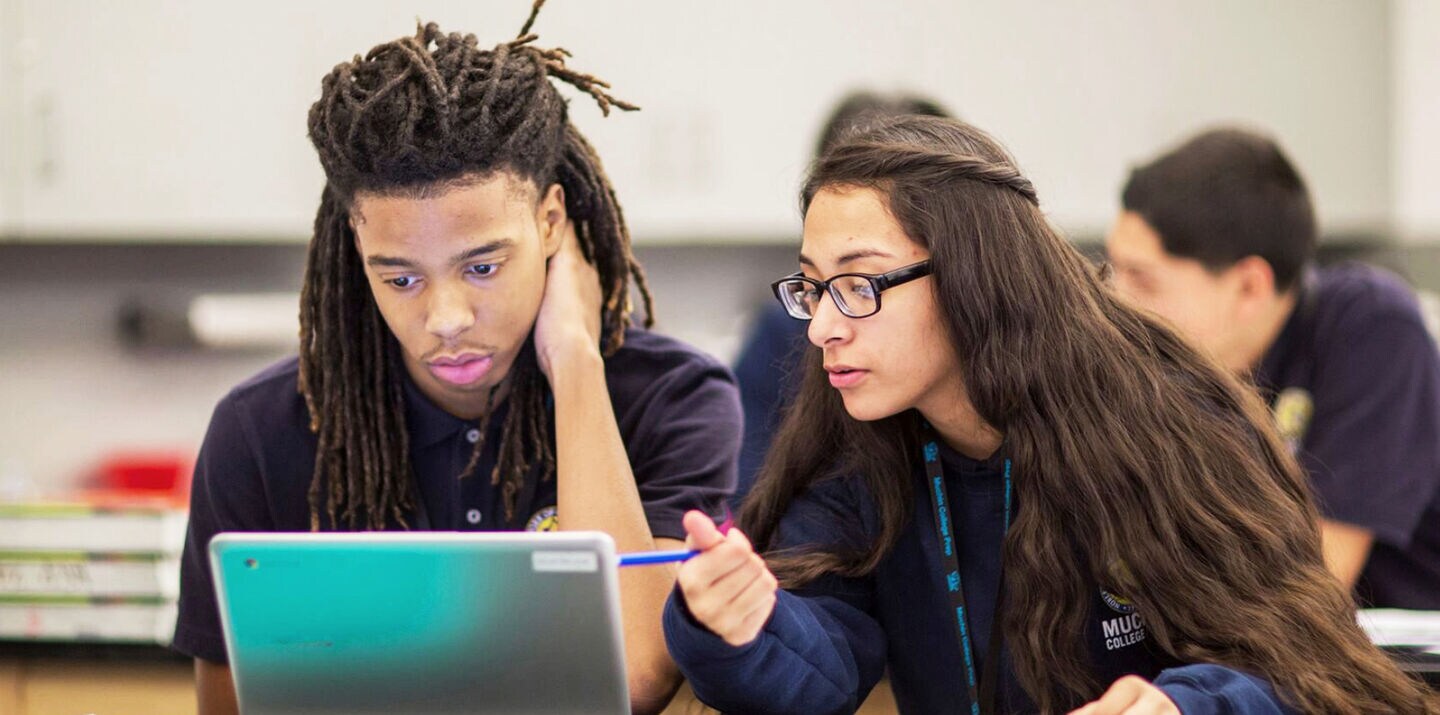
How Data Is Helping This School Drive Big Student Outcomes
At Muchin College Prep in Chicago, the school team has developed smart systems for using data to advance student achievement, school culture, and college readiness.
This story is part of a regular series called What Works: Schools to Learn From. In this series, we will profile each of the five schools that were recognized by Teach For America’s Schools to Learn From program in 2019. These schools were selected because they excel at providing an excellent education in a specific area, such as culture, systems, or pedagogy. These schools have opened their doors to other educators to share honest insights about what works and what they’ve learned along the way.
Nothing is wasted at Muchin College Prep. That includes time, resources, and especially space. The school occupies the seventh floor of a highrise building in the heart of downtown Chicago, where 960 students in grades nine through 12 fit into a few dozen classrooms. Teachers rotate through shared classrooms each period, and during the periods they are not teaching, they do their prep work at desks in the hallways. The girls’ gym class meets in a large conference room for a dance aerobics class projected on a big screen. And after classes are over in the afternoon, the track team runs through the halls, past lockers covered in colorful college pennants.
Despite the compact space, the Muchin team has found a way to maximize everything and make it work. The school has consistently ranked among the top 10 highest performing non-selective high schools in Chicago.
Muchin College Prep is a public charter high school and part of the Noble Schools network, which includes 18 campuses in the Chicago area. Students enroll through a lottery system and are selected at random. Emily Mason joined as a founding algebra teacher in 2009 after serving as a 2007 St. Louis corps member. She has remained at the school ever since and is now in her fifth year as the school’s principal, following in the footsteps of founding principal Kimberly Neal, also a TFA alum.
The majority of students attending Muchin identify as Latinx or Black and come from over 60 different zip codes across Chicago. Many students live in neighborhoods where violent crime has spiked over the last decade. Some students spend 45 minutes to an hour commuting to school, many traveling alone on municipal buses or trains. The school’s structured family environment and diverse staff create a safe place for students to affirm their identities, discover their strengths, and plan for a future that includes earning a college degree.

Muchin College Prep is focused on college readiness and collects data on the major factors that go into student success. This includes measuring academic achievement and teacher performance, and keeping a pulse on school culture. Everything ladders up to goals around student performance on the SAT and scores on their AP exams.
Students work hard at Muchin. And their results show that they are countering the deficit-based narratives about students of color growing up in Chicago’s low-income neighborhoods. Since the school’s founding, 100 percent of its scholars have been accepted to four-year colleges and universities, and 70 percent of its alums are either enrolled in or have graduated from college.
These strong student outcomes are the result of a school team that is fully invested in empowering students to overcome systemic inequity through life-altering education. The school team is driven to learn and continuously improve and has built daily practices around using insights to ensure that all students are on track to a future filled with opportunity.
Here is what works at Muchin Academy.
Build a Safe and Supportive Culture—And Find a Way to Measure it
Improving school culture has been a big focus of the Noble network leadership team in recent years. Last year the 18 schools within the network, including Muchin, underwent a big transition after Constance Jones replaced the network’s original founder and CEO. One of her first priorities was transforming the culture in schools across the network, allowing students more freedom of self-expression while still maintaining high expectations for student outcomes.
Responding to feedback from students and teachers, Constance has relaxed the dress code and loosened some of the strict rules governing how students present themselves, including those involving visible tattoos and the way students choose to wear their hair to express their cultural identity. The new CEO set the tone for the culture shift by returning from winter break with purple hair.
As the culture evolves at the network level, the school team at Muchin remains committed to providing a safe and inclusive space for students and staff to bring their full selves to school every day. Staff push themselves and each other to be better role models and advocates for students, even when those conversations are sometimes messy.
Nick Jones serves as the dean of culture at Muchin and says the school’s core values—family, diversity, investment, and growth—empower staff and students to be authentic and open. “Our family is more like the Simpsons than the Brady Bunch,” he says.
Everyone on the Muchin team holds students accountable for good behavior. At the beginning of the school year, students receive a list of what constitutes unacceptable conduct and the consequences for breaching these rules. The expectations and protocols are clear, down to the smallest detail, such as the routine students must follow when greeting someone who visits their classroom.
Teachers keep track of student conduct through a merit/demerit system, which provides scholars with immediate feedback on their choices. Demerits accumulate into detentions, while students can use the merits they earn to purchase goods from the school’s “Merit Store.”
Every other week, the deans on the school’s leadership team perform a culture audit by visiting classrooms to evaluate how teachers are maintaining an environment that is most conducive to learning. The scores from these audits count toward teachers’ goals around supporting the school’s culture.
Get Super Clear on the Goals and the Values that Drive Student Achievement
One factor that makes Muchin so successful is clarity about goals. Students and staff have a clear definition of success. The school team has a clear understanding of the school’s identity framework—why it exists, what it does, and how it is measured. The school’s core values also help to drive a culture where all levels of staff are invested in what the school is striving for. “This level of clarity is 100 percent what changed the game for us,” Emily says.
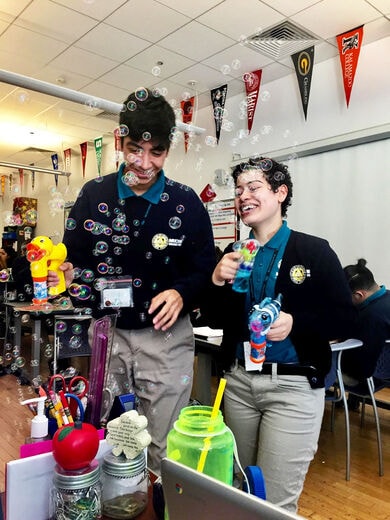
But getting to this level of clarity didn’t happen overnight. The school team has spent years iterating on its systems, incorporating feedback, and getting everyone aligned around what it would take to see 80 percent of its scholars graduate from college within six years.
This meant doubling down on college readiness and deciding on measurable outcomes for student achievement, school culture, and staff performance that would align with this big goal. Each school team then created systems for measuring growth across these areas in weekly, quarterly, and yearly increments, so they can quickly adjust as needed.
In order to further incentivize progress toward goals, teachers have a bonus structure tied to meeting goals around creating a safe and supportive environment in their classroom, student satisfaction with their advisor, and student GPA. The school leadership team regularly evaluates teachers through observations and meets with teachers to review data.
Students also complete an annual scholar satisfaction survey to rate how they feel about their teachers and the school environment. Teachers earn points through each of these systems and receive an annual bonus for performing well.
While the bonus system offers an additional incentive, teachers’ personal investment plays an outsized role in achieving goals for student success. Teachers see their work through the lens of the school’s core values and understand that their mission is complex and requires a sacrifice unseen in most occupations. Jorge Segovia, who teaches physical education and also advises a cohort of 10th grade boys sums it up: “The kids are always on everyone’s mind.”
Start With the Data You Have and Find a System That’s Right for Your School
The Muchin team is very intentional about how it acts on its data. And like the other structures at the school, the team’s approach is guided by a desire to seek clarity, learn, and continuously improve.
There is clear ownership among staff as to who is responsible for entering and reviewing data for each of the school’s systems. The school team has created a regular cadence for collecting data and has created a school-wide tracker that rolls up all the data entered by different teams. At any moment Emily and others have visibility into how things are going.
Once a quarter, the school’s leadership team does an assessment of the entire roll-up of school data. When gaps do arise in the data, the team performs a root-cause analysis to identify the underlying factors. This means asking the three Ws: What does the data say? Why does it say that? What can we do about it? After seeing mixed growth results on PSAT assessments last year, the team was able to look across other data points and through root-cause analysis, find opportunities to improve the rigor of student work.
While it’s easy to become overwhelmed by all the data collected from various systems, Emily encourages school leaders to start by taking stock of the data they have and finding the right cadence to review it.
“It’s important to shift your perspective and get out of the weeds,“ Emily says. “As a leader, you have to move from the dance floor to the balcony to get an accurate picture of what is going on.”
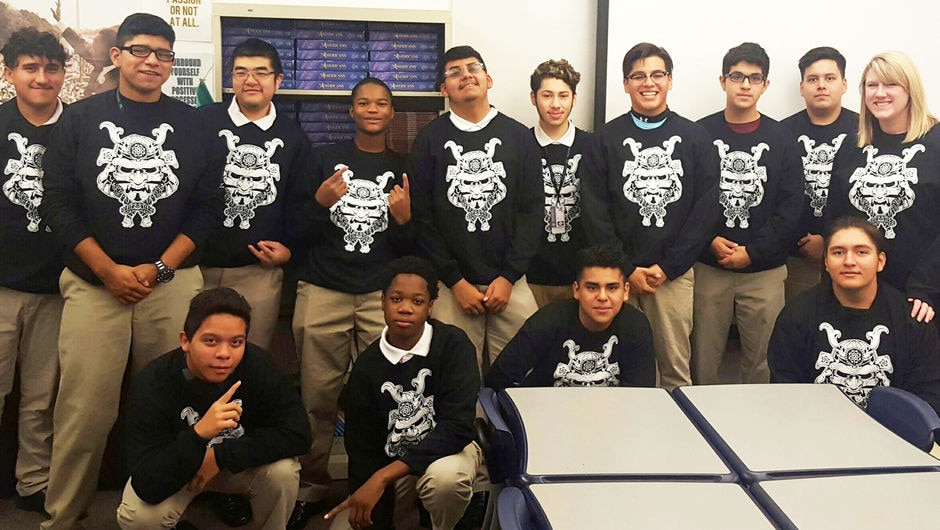
Use Student Data to Provide Targeted Support
Expectations for student academic achievement and conduct are high at Muchin. Among the many milestones of college readiness the school tracks, students are expected to make significant growth on the practice SAT, maintain a 3.0-grade point average, and gain acceptance into a two or four-year college. Students who entered the ninth grade in 2017 increased their score on the SAT by an average of 95 points. There are a lot of support systems in place to ensure that students are thriving academically and have the social-emotional supports to be successful.
Among these supports is the student advisory program, which focuses on the school’s core values of family and growth. Advisors group students by the gender with which they identify and stay with their cohort throughout all four years of high school. This grouping creates a family unit in which students can deepen their relationships with their cohort over time. The advisory cohorts are also intentionally designed to mix students from different neighborhoods to help create an environment that is welcoming and inclusive of diverse perspectives. Students are encouraged to “skittle” themselves during advisory, which means mixing up the seating arrangement and sitting next to someone who may be from a different background.
When asked to share their favorite thing about attending Munchin, several students put advisory at the top. “We can have guy talk,” one ninth-grader says. “My advisor always talks to me when I need him.”
Advisors also gauge how students are progressing academically. Every advisor has access to dashboards of their students’ data. And every week students have dedicated time to review their metrics and set goals. If a student is falling behind, they can join the Climbers Club, a two-week intensive after-school support group. If a student is at risk for failing a class, support is escalated to one-on-one coaching from an academic dean.
Family investment is another important factor in supporting student outcomes. The school hosts a report card pick-up night every quarter, at which parents and caregivers come to the school to pick up their child’s report card and have a quick check-in with their child’s advisor. It’s an important opportunity for parents to engage with teachers and staff in person, and advisors are accountable for seeing 100 percent of their students’ parents at these meetings.
Chase Johnson has been at Muchin since teaching as a corps member in 2011. He currently serves as the dean of students for 11th and 12th grade, coaches and manages Muchin's Special Education department, and advises a cohort of boys. He says he will often go the extra mile to meet parents where they are for report card pick-up—including home visits or meetings at local coffee shops. “If we can’t bridge that gap, then it’s broken,” he says.
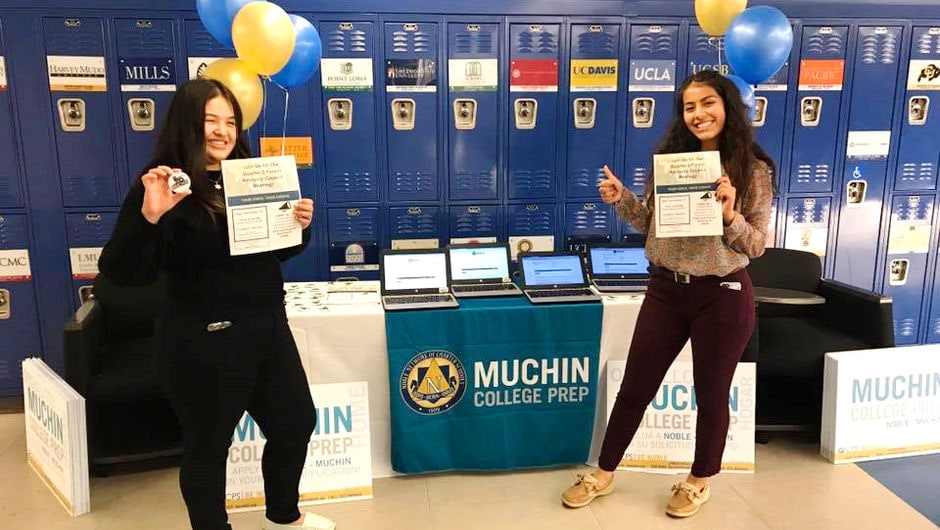
Support Adults to Meet High Expectations—Similar to How You Support Students
The Muchin team places a strong value on gathering feedback in order to drive growth. Just as students receive targeted academic support during advisory, teachers also receive differentiated coaching to continually improve their practice.
For new teachers, this happens once a week through a 25-minute coaching session with a dean of instruction. During the session, teachers review student data and work samples with their dean and identify actionable steps to fill any gaps in learning.
Teachers are expected to align every class assessment with the college readiness standards for math, reading, and writing that students must master in order to do well on the SAT. As a quality assurance measure, the deans of instruction review drafts of teachers’ learning plans and quizzes to ensure they meet the standards for rigor. Teachers enter grades for assignments and quizzes twice a week, which populate a dashboard that the leadership team can access.
Brennan Lawler joined the Muchin team as a 2011 corps member and is now one of two deans of instruction responsible for teacher coaching and support. He says this targeted coaching helps teachers do the heavy thinking to plan their next lesson. It also ensures that no student is ever left behind—a creed that everyone on the school team takes to heart.
“Some teachers are skeptical about this until they see the result,” Brennan says “But we don’t move on until kids learn.”
Do you work at or know a school that is doing great things for kids? Want to share these learnings with a national audience? Learn more about TFA’s Schools To Learn From program. And feel free to share your thoughts on this story or suggest other stories for us to pursue.
Sign up to receive articles like this in your inbox!
Thanks for signing up!
Content is loading...







